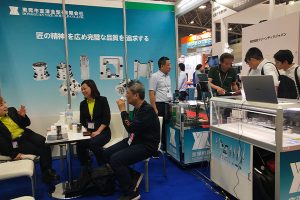How to Accurately Identify Wear-Resistant Tungsten Carbide
I. Comprehensive Understanding of Tungsten Carbide Basics Before embarking on the identification of wear-resistant Tungsten Carbide, a thorough understanding of its fundamentals is crucial. Wear-resistant Tungsten Carbide, as a high-performance […]
I. Comprehensive Understanding of Tungsten Carbide Basics
Before embarking on the identification of wear-resistant Tungsten Carbide, a thorough understanding of its fundamentals is crucial. Wear-resistant Tungsten Carbide, as a high-performance hard alloy material, is meticulously fused through powder metallurgy processes, combining tungsten carbide (WC) with metal powders such as cobalt (Co). With tungsten carbide as the core component, typically accounting for more than half of the alloy’s total composition, and cobalt serving as the binder to ensure tight bonding between tungsten carbide particles, a robust alloy structure is formed. Thanks to its high hardness, strength, exceptional wear resistance, high-temperature tolerance, and corrosion resistance, Tungsten Carbide finds widespread application in mechanical processing, mold manufacturing, aerospace, and other fields.
II. Detailed Observation of Tungsten Carbide’s Appearance
Color and Gloss
High-quality wear-resistant Tungsten Carbide exhibits a uniform deep gray or black hue, with a superior surface gloss devoid of any color variations or impurities. The presence of significant color differences, impurities, or spots on the surface often indicates subpar raw material quality or manufacturing process flaws.
Our factory business: carbide parts, mold parts, medical injection molds, precision injection molds, teflon PFA injection molding, PFA tube fittings. email: [email protected],whatsapp:+8613302615729.
Texture and Structure
The texture of Tungsten Carbide should be fine and uniform, without pores, cracks, or inclusions. Observing its cross-section reveals evenly distributed tungsten carbide particles tightly encased by the cobalt binder, forming a stable alloy structure. Blurred, uneven textures, or defects suggest improper manufacturing processes or inferior raw materials.
III. Rigorous Testing of Tungsten Carbide’s Performance
Hardness Testing
Hardness is a key indicator for assessing Tungsten Carbide’s performance. Using a hardness tester, high-quality wear-resistant Tungsten Carbide should have hardness values within the range of 86–93 HRA (equivalent to 69–81 HRC). Lower hardness values may render it unsuitable for intended applications.
Wear Resistance Evaluation
Wear resistance testing is vital for judging Tungsten Carbide’s performance. Employing a wear tester, by observing wear volume and morphology, high-quality Tungsten Carbide should demonstrate low wear and good wear patterns, ensuring stable performance during long-term use. Conversely, it may fail to meet application standards.
Toughness Consideration
Toughness is equally important. Through impact testing, high-quality Tungsten Carbide should withstand impact loads, exhibiting high toughness values and maintaining structural integrity and stability. Insufficient toughness can lead to fracture or damage during use.

IV. Thorough Verification of Tungsten Carbide Certificates and Markings
Manufacturer Certificates
When purchasing, it is essential to request and verify the manufacturer’s quality certificates and testing reports to ensure Tungsten Carbide meets quality and performance standards. The absence of valid certificates or reports, or the presence of false information, may signal substandard products.
Markings and Batch Numbers
High-quality Tungsten Carbide products should have clear markings and batch numbers on their surfaces, facilitating traceability of production batches and raw material sources, ensuring product quality traceability. Missing or blurred markings often indicate potential quality issues.
V. Choosing Reputable Suppliers
When selecting suppliers, prioritize reputation and capability. Reputable suppliers possess stable production capacities, access to high-quality raw materials, and can provide high-quality Tungsten Carbide products. By reviewing suppliers’ qualifications, production licenses, quality management system certifications, and incorporating user feedback and evaluations, comprehensively assess their service quality and credibility.
VI. Conclusion
In summary, identifying wear-resistant Tungsten Carbide requires comprehensive consideration from multiple dimensions, including basic knowledge, appearance observation, performance testing, certificate verification, and supplier selection. Only in this way can we ensure the purchase of truly high-quality Tungsten Carbide products, enabling them to perform optimally in applications and contribute to the thriving development of various industries.






